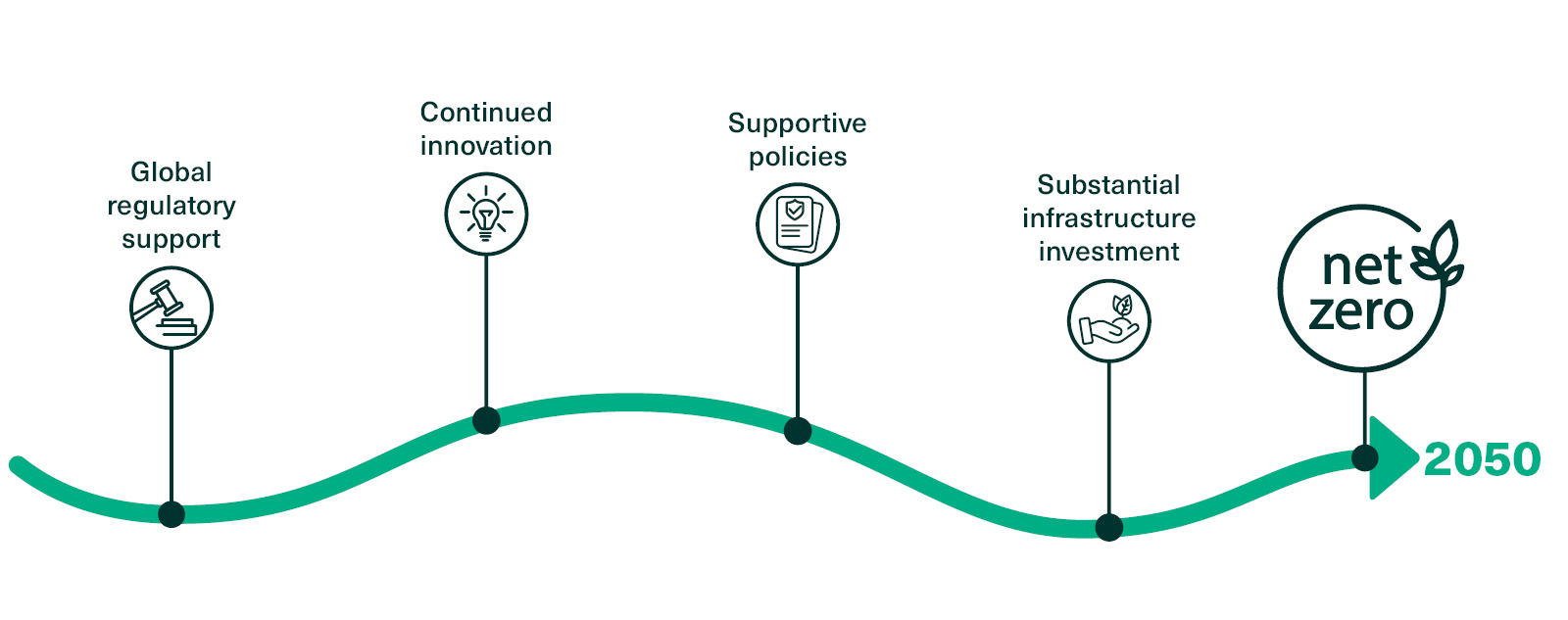Shipping’s fuel transition: Progress and challenges ahead
The shift toward alternative fuels in the maritime industry is advancing, though the pace reveals both achievements and ongoing challenges. More large vessels are being designed with dual-fuel capabilities, allowing them to operate on both traditional and alternative fuels like LNG and methanol. However, the transition is far from comprehensive, requiring sustained efforts to fully decarbonize.
Realistic progress in fuel capabilities
According to DNV’s Maritime Forecast to 2050 report (2024), only 7.4% of the current global fleet’s gross tonnage is capable of using alternative fuels as of June 2024. Meanwhile, nearly half (49.5%) of the new tonnage on order is designed with dual-fuel options, signaling the industry’s long-term intent to diversify. LNG remains a dominant choice in segments like container and car carriers, while newer orders for methanol- and LPG-fueled ships are starting to gain traction.
Yet, despite these advances, 92.6% of the existing fleet still depends on conventional fuel oils, highlighting both the slow uptake of alternative fuels and the significant hurdles to full-scale adoption. The use of emerging fuels like ammonia and hydrogen is in its infancy, with technical, safety, and infrastructure challenges that will require years of development to overcome.

Incremental changes and future outlook
While dual-fuel and alternative fuel-ready ships represent a forward-thinking approach, the shift remains cautious. By 2030, we may see more methanol-compatible vessels, especially among large container ships, but full industry-wide adoption of carbon-neutral fuels will require substantial infrastructure investment and supportive policies.
In summary, while progress is evident, the journey to net-zero emissions is gradual and complex. The maritime industry is laying essential groundwork, but reaching full decarbonization by 2050 will depend on continued innovation and global regulatory support.
Navigating a sustainable course in light of climate realities
In light of the latest UN climate report, which emphasizes the urgency of global action, the shipping industry’s progress in decarbonization takes on new significance. While the path is complex, the industry’s investments in alternative fuels, energy efficiency, and dual-fuel technology are important steps toward a sustainable future.
As the maritime sector continues this journey, embracing both innovation and collaboration will be essential. Shipping is uniquely positioned to contribute meaningfully to global emissions reductions, and by meeting its ambitious targets, the industry can help secure a cleaner, more resilient future for everyone.
"Sustainability at sea means balancing ambition with practical steps. We’re building a resilient future by combining alternative fuels, innovation, and collaboration across the industry"